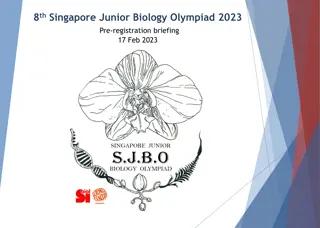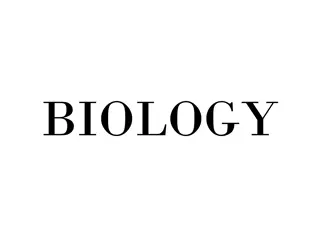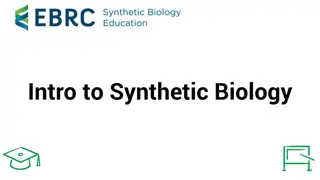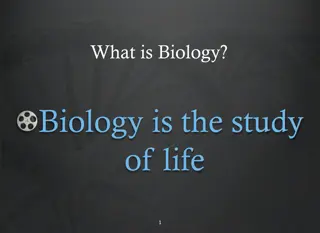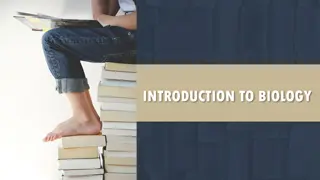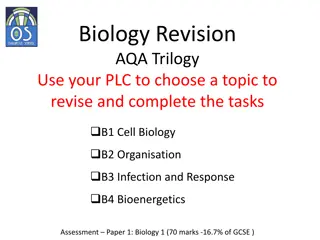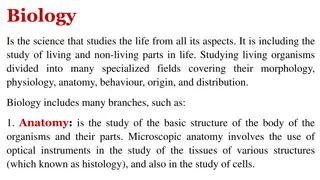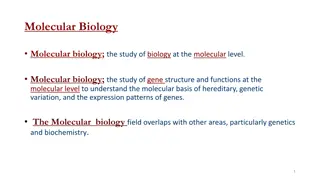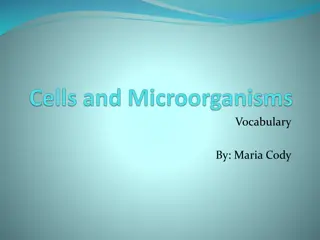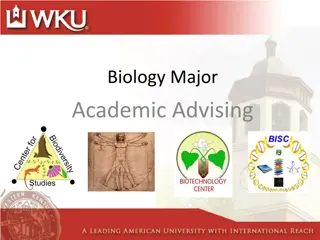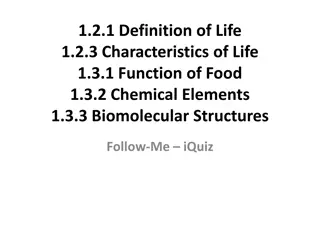Characteristics of Life in Biology
Biology is the study of life, focusing on the 8 essential characteristics that define living organisms, such as being made up of cells, reproduction, genetic code, growth and development, energy requirements, and response to the environment. Maintaining internal balance is crucial for organisms to thrive. Explore the fundamental aspects of life through this insightful overview.
Download Presentation

Please find below an Image/Link to download the presentation.
The content on the website is provided AS IS for your information and personal use only. It may not be sold, licensed, or shared on other websites without obtaining consent from the author.If you encounter any issues during the download, it is possible that the publisher has removed the file from their server.
You are allowed to download the files provided on this website for personal or commercial use, subject to the condition that they are used lawfully. All files are the property of their respective owners.
The content on the website is provided AS IS for your information and personal use only. It may not be sold, licensed, or shared on other websites without obtaining consent from the author.
E N D
Presentation Transcript
Chapter 1: The Human Body: An Orientation Background 1. 7. 3. Made up of Cells Made up of Cells Maintaining internal balance Maintaining internal balance Based on genetic code Based on genetic code 5. Need for materials and energy Need for materials and energy 8. 4. 2. Evolution 6. Evolution Grow and Develop Reproduction Grow and Develop Reproduction Response to environment Response to environment
Biology = the study of life There are 8 characteristics of life . . . oNo single characteristic is enough to describe a living thing . . . oThey must have all eight.
1. Made up of cells MULTICELLULAR: organisms composed of MORE than one cell
2. Reproduction There are 2 types of reproduction: 1. Asexual 2. Sexual **asexual = reproduction that requires ONE parent ***sexual = reproduction that requires TWO parents
3. Based on a genetic code ***DNA = DNA is the genetic code found in every cell. DNA is inherited from parents and controls your traits.
4. Grow and Develop All living things grow and develop during at least part of their life. Think about it . . . Do you look the same as when you were born????
5. Need for materials and energy **Living things need a constant supply of materials and energy. **Metabolism = the combination of chemical reactions through which an organism builds up and breaks down materials as it carries out life processes static.howstuffworks.com/gif/irrigation-photosynthesis.gif
6. Response to the environment **Organisms detect and respond to STIMULI (or signals) from their environment. **Internal stimuli = signal comes from inside the organism **External stimuli = signal comes from outside the organism
7. Maintaining internal balance Despite changing conditions around them, organism must keep their internal conditions stable/balanced. http://tbn0.google.com/images?q=tbn:W18cAwdmFP9VxM:http://bg-umc.org/shivering.gif **Homeostasis = the process of keeping the internal environment stable/balance/constant
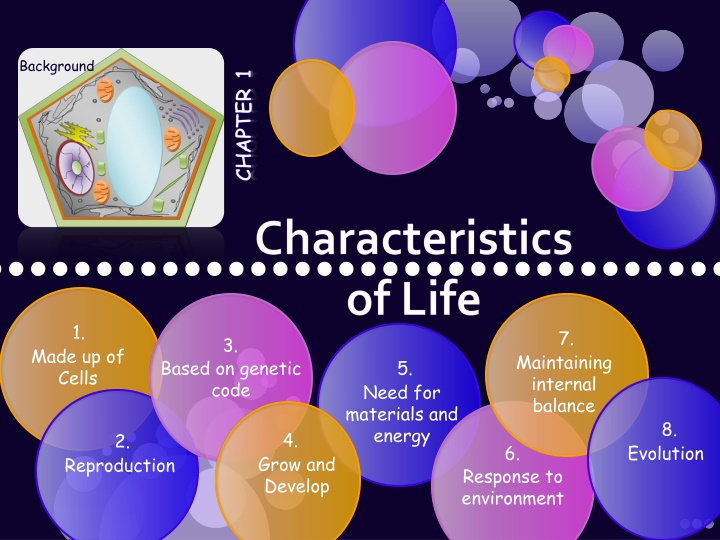

![❤[READ]❤ Cosmic Biology: How Life Could Evolve on Other Worlds (Springer Praxis](/thumb/21556/read-cosmic-biology-how-life-could-evolve-on-other-worlds-springer-praxis.jpg)
